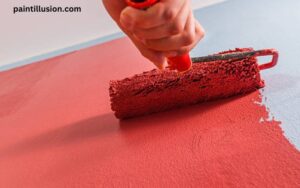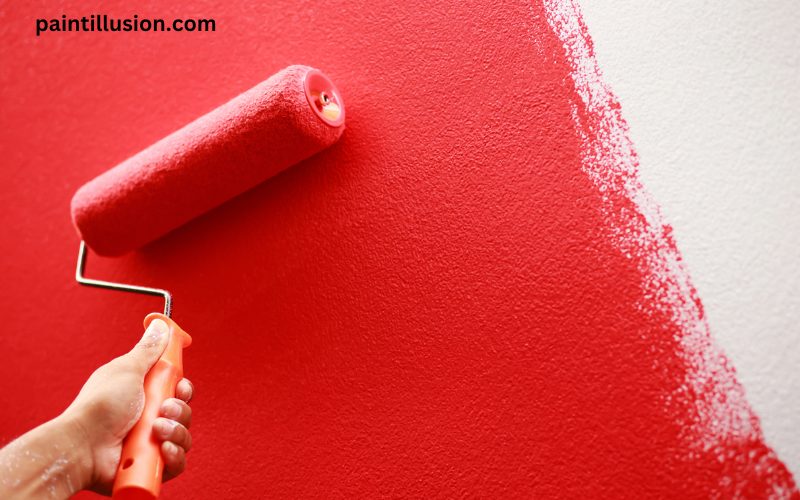When it comes to painting, achieving the desired color can be a challenging task. Paints Dry Darker or Lighter. One common concern among painters is whether the paint will dry darker or lighter than the intended shade. Understanding the drying process of paints and the factors that affect their appearance is crucial for obtaining accurate results. In this article, we will delve into the concept of paint drying darker, explore why it happens, debunk common misconceptions, and provide professional advice on achieving the desired color when painting.
Factors that affect the appearance of dried paint
Before we discuss why some paints dry darker, it is essential to understand the various factors that can influence the appearance of dried paint. These factors include the type of paint, the surface it is applied to, the lighting conditions, and the drying time. Different types of paints, such as oil-based or water-based, may exhibit variations in color when they dry. Additionally, the surface texture and color can also impact the final result. For instance, a porous surface may absorb more paint, resulting in a darker shade. Furthermore, the lighting conditions in the room can create an optical illusion, making the paint appear differently. Lastly, the drying time of the paint can affect its final color, as some pigments may undergo chemical changes during the drying process.
Understanding the concept of paint drying darker
Now that we have explored the factors that influence the appearance of dried paint, let’s delve deeper into the concept of paint drying darker. When paint is wet, it often appears lighter because of the higher reflectivity of the wet surface. However, as the paint dries, the solvent evaporates, and the pigments become concentrated, causing the color to darken. This phenomenon is known as the “drying darker” effect. It is important to note that the degree to which the paint darkens depends on various factors, including the type of paint, the pigments used, and the application technique. While some paints may darken only slightly, others may undergo a more significant color change.

Why do some paints dry darker?
Now that we understand the concept of paint drying darker, let’s explore why it happens. One of the main reasons is the pigments used in the paint formulation. Certain pigments are more prone to darkening during the drying process due to their chemical composition. For example, some organic pigments, such as phthalo blue or quinacridone violet, have a tendency to darken as they dry. On the other hand, inorganic pigments like titanium dioxide tend to be more stable and maintain their color during drying. Additionally, the opacity and thickness of the paint layer can also contribute to the darkening effect. Thicker layers of paint may dry darker due to the increased concentration of pigments.
Common misconceptions about paint drying
There are several common misconceptions surrounding the drying process of paints, which can lead to confusion and frustration for painters. One of these misconceptions is that all paints dry darker, which is not entirely true. While many paints do experience a degree of darkening, some may dry lighter or maintain their color. Another misconception is that the color on the paint swatch will match the dried paint perfectly. In reality, the appearance of the dried paint can be affected by various factors, as discussed earlier. It is crucial to keep these misconceptions in mind and approach the painting process with realistic expectations.
Tips for achieving the desired color when painting
Now that we have covered the factors influencing paint drying and debunked some misconceptions, let’s explore some tips for achieving the desired color when painting. Firstly, it is advisable to test paint swatches on the actual surface before committing to a specific shade. Colors can appear differently depending on the surface texture and lighting conditions, so testing beforehand allows you to make an informed decision. Secondly, if you need to apply multiple coats of paint, ensure that each layer is dry before proceeding. This will prevent the accumulation of pigments and potential darkening. Lastly, if you are concerned about the paint drying darker, consider choosing paints with more stable pigments or consult a professional for advice.
Techniques for testing paint swatches before application
Testing paint swatches before application is a valuable technique to ensure the desired color outcome. Here are a few techniques to help you in this process. Firstly, apply a small amount of paint directly onto the surface you are planning to paint, allowing it to dry completely. This will give you an accurate representation of how the paint will appear on the surface. Secondly, consider testing the paint swatch under different lighting conditions, such as natural daylight and artificial light. This will help you observe any variations in color due to lighting. Lastly, if you are unsure about the final result, consider creating a sample board by applying several coats of paint onto a large piece of cardboard or wood. This will give you a better understanding of how the paint will look when fully dry.

How to prevent paint from drying darker
If you are concerned about the paint drying darker than desired, there are several precautions you can take to minimize this effect. Firstly, ensure that the surface you are painting is properly prepared. Smooth out any imperfections and apply a suitable primer if necessary. This will create a more even base for the paint and reduce the likelihood of darkening. Secondly, consider using paints with more stable pigments that are less prone to color changes during drying. Additionally, applying thin layers of paint and allowing each layer to dry completely before adding more can help prevent excessive darkening. Lastly, if you are unsure about achieving the desired color on your own, it is always beneficial to consult a professional painter who can guide you through the process.
Professional advice on paint drying and color accuracy
When it comes to achieving accurate color results, professional advice can be invaluable. Professional painters have extensive experience in dealing with different types of paints and can provide guidance on achieving the desired color. They can recommend specific paint brands that are known for color accuracy and stability. Additionally, professionals can offer insights on application techniques and drying times that can help minimize color variations. If you are undertaking a significant painting project or have specific color requirements, consulting a professional painter can save you time, effort, and potential frustration.
Conclusion
In conclusion, the concept of paints drying darker or lighter is an important consideration for painters. Understanding the factors that influence the appearance of dried paint, such as the type of paint, surface texture, lighting conditions, and drying time, is crucial for achieving accurate color results. While some paints may dry darker due to the concentration of pigments during the drying process, it is essential to debunk common misconceptions and approach the painting process with realistic expectations. By following the tips and techniques discussed in this article, you can increase your chances of achieving the desired color when painting. Remember, if you are unsure about the process or need assistance, seeking professional advice from experienced painters can provide invaluable guidance. Happy painting!

